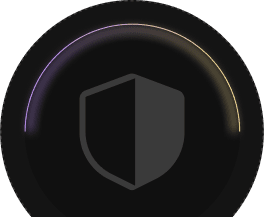What does the AMLTEST check show?


The main result of the AMLTEST check includes the risk score percentage, risk sources, and whether the address
is on the blacklist.
Additionally, the check result may provide optional information about the address, such as its cluster
affiliation, current balance, and the amount of transferred funds.
The check result may be incomplete if the required information is missing.
Please note that for blockchains in limited mode, clustering and the risk score percentage are unavailable. A
risk score can only be provided for a counterparty if it is associated with an entity.
What does the percentage risk score mean?


The overall risk score (percentage) represents the likelihood that the address is linked to illegal activities.
AMLTEST identifies connections between the checked address and other addresses on the blockchain, as well as
with entities from various categories, each having a specific conditional risk score. The overall risk score is
then calculated based on these connections.
When calculating the overall risk score, the severity of the risk from each connection is considered. For
instance, if the address is connected to entities in the Mining category (0% risk) and Darknet (100% risk), the
Darknet connection will have a greater impact on the risk score, as it is a higher-risk category, while the
Mining connection will carry less weight in the assessment.
What do the sources of risk mean?


AMLTEST analyzes the provided wallet address for connections to known blockchain services—entities. These
services are grouped into categories based on their associated risk levels for illegal activity.
The AML check displays the connections of the checked address to these entity categories, identifying the
sources of risk with which the address has interacted, along with the percentage of funds transferred to or from
these services.
Using all identified risk sources, an overall risk score is calculated, assisting the user in making informed
decisions regarding the assets.
What is the difference between an address and a transaction checks?


An address check involves analyzing all the connections of the address to other addresses and entities on
blockchains, taking into account both incoming and outgoing fund movements.
A transaction check process is different from an address check, and the result depends on your role in the
transaction. The overall risk score always pertains to the counterparty.
To check a transaction, you need to provide the TxID and the destination address, and specify your role in the
transaction:
-
Recipient (you received a deposit into your wallet): The addresses from which the funds were received are
analyzed. The risk sources describe the services from which the transaction senders accumulated the
transferred funds, with a breakdown of percentages.
-
Sender (you made a withdrawal from your wallet): The wallet that received the funds is analyzed. The risk
sources describe all connections of the recipient address, with a percentage breakdown.
Therefore, when checking a transaction, the risks for the recipient are assessed if you receive funds, and the
risks for the sender are assessed if you send funds.
How do I understand risk assessment?


Each client determines their own acceptable risk threshold. The risk score can be broadly categorized as
follows:
- 0-25%: Clean wallet/transaction with minimal risk.
- 25-75%: Moderate risk level.
- 75%+: High-risk wallet/transaction.
Additionally, it's important to pay attention to the red sources of risk in the detailed analysis, as these
indicate higher potential threats.
What cryptocurrencies does AMLTEST analyze?


AMLTEST supports all major blockchains and their tokens. We are continuously adding support for new
cryptocurrencies. The latest list of supported cryptocurrencies can always be found in the web dashboard or the
API Documentation.
The risk is higher than 50%, but I am certain that the address is reliable. What to do?


The check results are based on international databases that are continuously updated. As a result, an address
that had a 0% risk yesterday might have interacted with a risky counterparty today, causing the risk score to
change. If you want to verify the result and understand the cause of the high risk, we can perform a detailed
check for you.
How often are checks recommended to do?


The answer to this question depends on your specific risk model. As a general recommendation, it's advised to
perform an AML check whenever you interact with an unknown wallet or smart contract.
How quickly is the balance replenished?


After transaction confirmation, the balance is updated as follows:
-
Up to 10 minutes if the payment was made within 24 hours of the invoice being issued.
-
Up to 25 minutes if the payment was made more than 24 hours after the invoice was issued.
In general, BTC, ETH, USDT, and fiat payments are processed faster than other cryptocurrencies.
What happens if I don't use all my checks each month?


If you purchased checks with no expiration date, they will remain in your account and can be used at any time.
If you purchased checks with a time limit, they will be deducted from your account once the expiration date has
passed.
What if I will need more checks?


You can purchase additional checks as needed. The number of checks remaining is always displayed in your user
information.


